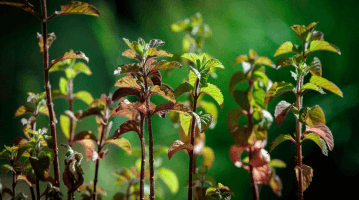The biodiversity of a river
At the crossroads of a number of different environments, rivers are much more than an ecosystem, they’re a place for crucial exchanges between species, encounters and interactions that must be preserved.
From the aquatic flora and fauna found on the banks to the forest layers and meadows that run alongside them, rivers represent vital links. They provide shelter, nourishment, protection, transport and regulation, all invaluable services to biodiversity, which is under considerable pressure from human activity, from urbanisation to pollution.
Rivers, biodiversity’s eco-friendly neighbourhoods
Bridging the gaps between land and aquatic environments, rivers are a combination of several types of habitat, capable of providing shelter for numerous plant and animal species. Not only does the survival of the river ecosystem itself depend on this fragile balance, but so do all the things that interact with rivers. All the forests, meadows and even towns they pass through.
Riverbanks
From the soil to the water, riverbanks are areas of great ecological richness, where tree roots, hydrophilic plants and aquatic plants that thrive on the surface meet. These micro-ecosystems are home to amphibians and whole populations of insects and small animals that are particularly fond of wetlands. Sheltered by root systems that dip below the surface, nurseries of fish and other small aquatic animals flourish in the loose clay, silt, sand and gravel. Keeping watch over the undulations of the river, willows, hazels, ashes, alders and poplars are able to grow big and strong as they quench their thirst for plenty of water. The soil is home to mints, violets and orchids, which thrive in the cool, damp conditions.
Rivers
From bed to surface, even though they’re in constant motion, rivers are populated by plenty of animals, plants and algae. The location and density of different species depend on the depth of the water, its nutrient composition and quality, as well as the strength of the current. Fixed life forms will always find something to cling onto to anchor themselves closer to the banks or riverbed, or around reliefs created by rocks. Where the current is weaker, you’ll usually find water crowfoot, reeds, knotweed, water milfoil, water lily and duckweed closer to the surface. As the water passes over rocks and skirts the riverbank, decomposing plants and animal cast-offs enrich the environment in a permanent cycle, which takes care of the sustenance of all those who make their home here.
Did you know ?
Do you know how to tell a plant from algae? Although they both belong to the plant kingdom, plants have roots, whereas algae do not!
Riparian forests
The woodland areas you find alongside riverbanks are home to an ecosystem rich in plant and animal species. Trees, such as poplars, oaks and planes, provide a habitat for animal species. They create tight root networks that strengthen the banks and limit erosion. By filtering out the sun’s powerful rays, the trees also limit how much the river water can warm up and the development of bacteria or parasites that would otherwise occur.
Alluvial banks, backwaters, flooded neighbouring meadows and marshland, the spaces adjacent to rivers are full of interactions between species and cultivate an abundance of biodiversity. And these interconnected ecosystems are only strengthened by these exchanges, supported by the passage of the river. A balance that has to be closely monitored, because it faces numerous threats.
Rivers under threat
- Here in France, where our Foundation is based, 50% of bird species, 100% of amphibians and 30% of all rare and threatened species depend on river ecosystems (source: biodiversité.gouv.fr). Yet 87% of wetland habitats identified in France in the 18th century have since been destroyed. Only 6% of these ecosystems are now in a favourable state of conservation, according to Nature France.
- All over the world, river biodiversity is under threat. Land development, urbanisation, draining and diverting watercourses and dam building have all drastically reduced these habitats and their capacity to support a wide range of species.
But while major human infrastructure projects are a highly visible cause of the fragility of our rivers, it’s undoubtedly pollution – which is much harder to spot – that poses the most serious threats to the biodiversity of wetlands.
- Often at “the end of the chain”, rivers are highly exposed to pollutants from industry (heavy metals) and agriculture. Intensive farming is one of the main culprits, with massive use of pesticides, insecticides and herbicides. Impregnating plants and the soil, these phytosanitary products run off into our rivers, wreaking havoc on aquatic ecosystems. But rivers also collect exhaust fumes, hydrocarbons, oils and all kinds of other waste products, especially plastics, turning some of them into floating waste dumps. They can also carry pollutants from one environment to another, as they pass through or near contaminated areas, such as former mines.
- Even rainwater can be a pollutant. In some areas, the high concentration of nitrates in rain increases the phosphate content of rivers, a specific type of nutrient. Some species, like algae, then start to develop to the detriment of others, depleting the oxygen supply and rapidly destroying the habitat for its other tenants.
- But water pollution isn’t just chemical, it can also be thermal! Every river has a certain “cruising” temperature, which varies little and provides a stable living environment for its inhabitants. Sudden warming can put many species at risk. In France, for example, alarm bells have previously rung about certain nuclear power plants discharging their cooling water into rivers.
Want to know more about the threats to biodiversity? See our dedicated pages!

Biodiversity can still surprise us...
Find out more about the incredible powers of water mint!
